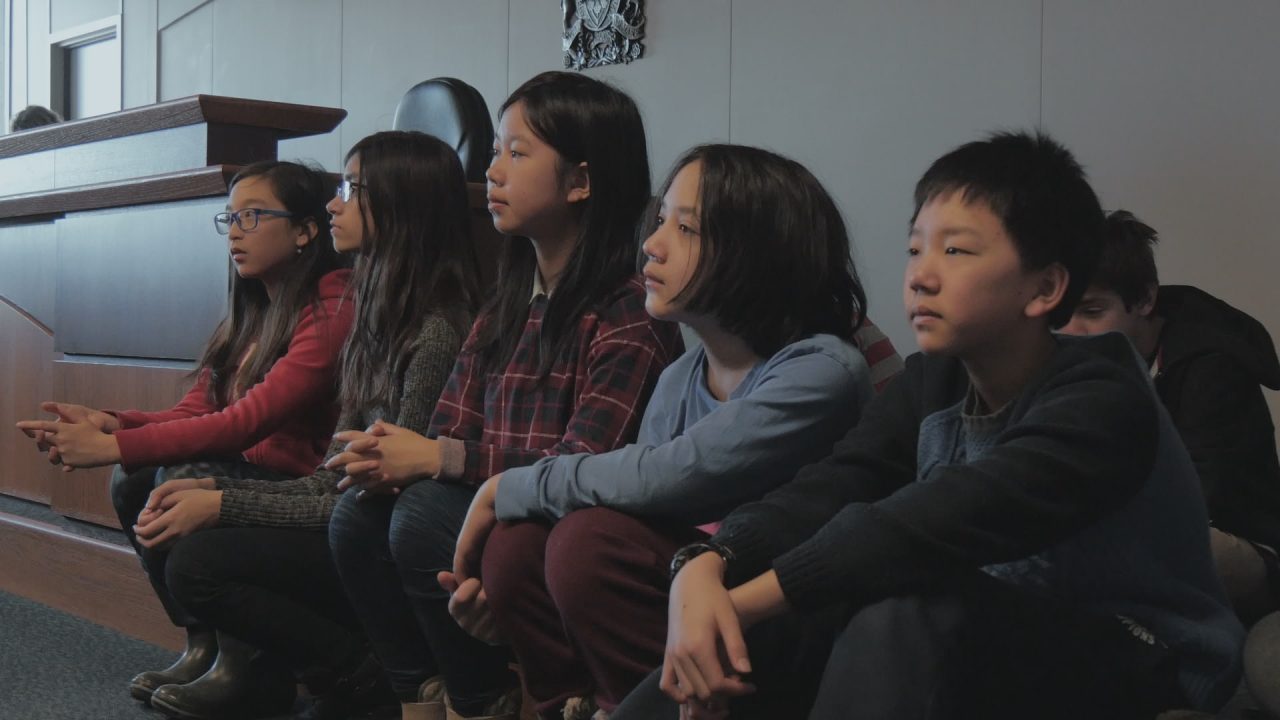The NFB and World Fairs, pt. 2: Osaka and Expo 70
The City (Osaka), Kaj Pindal, provided by the National Film Board of Canada
This is the second of a 4-part series documenting the NFB’s involvement with World Fairs, from Montreal to Shanghai. It was written by Marc St-Pierre, our French Collection analyst. – CW
The Osaka World’s Fair, the first ever presented in Asia, opened its doors on March 14, 1970, under the theme “Progress and Harmony for Mankind.” Canada was present at the exposition with a spectacular pavilion: an immense pyramid with a central opening and an entirely mirrored surface. More than 25 million people visited the Canada Pavilion, the theme of which was “The Urban Environment.
The Land and The City
The NFB’s contribution to the pavilion came in the form of two films for visitors: The Land and The City. The first was designed to show off the vastness of the country, the potential of its natural resources, its plant and animal life, and the challenges posed by its climate and geography. The second was an animated short that provided a humorous look at Canada as an urban, industrialized nation, showing the ingenious methods its people had deployed to conquer their environment, and demonstrating the country’s status as a cradle of ingenuity, creativity and invention.
As in Montreal three years before, the Osaka World’s Fair provided an opportunity for the Film Board to offer audiences out-of-the-ordinary viewing experiences. The Land was shot in Panavision, a film format that enabled a wider image than the standard 35 mm used in movie theatres, and then blown up to 70 mm in Technicolor’s Hollywood labs. The technology used to shoot the film, in conjunction with the final 70 mm print, allowed The Land to be shown on a huge triangular screen. The viewing experience was similar to that of IMAX, a technology that was developed around the same time. On either side of the main screen were two 10-metre rectangular screens, on which slides were projected. The Land offered spectators an immersive, spectacular and captivating experience. The City, meanwhile, was screened on a huge lighted panel made up of thousands of 5-cm-wide luminescent wafers. The panel was the backdrop to a three-dimensional exhibit and a light show on the theme of life in the city.
To be continued! Stay tuned for Part 3: Expo 86 in Vancouver.





The World’s Fair in Osaka was my first experience at a fair of this magnitude. The diversity amongst the people, the events, and the pavilions was incredible. We were there several days and enjoyed our experiences immensely!
Useful info. Lucky me I came across your blog by indicent, I bookmarked it so I can find it the next time.
Thanks for posting this. Great. Will you be posting the other film (Land) too? Would love to see it. I am currently writing about Native representation in Canada’s world fair contributions and am trying to find out about how Osaka was framed by Canada in this regard? Any thoughts? Does the film show anything interesting? Any comments are welcome. Thanks again.
Hello Mr. Rogers,
Thank you for your interest and questions. Your comment made us realize we’d neglected to add Canada the Land to NFB.ca. We published the film online this afternoon. You will find it here. Please take a look and let us know what you think!
Regarding your other question, Marc St-Pierre, our French Collection analyst informs me that he isn’t sure Canada’s Native Peoples were represented at the Canadian Pavillion in Osaka. However, he said we do have two films relating directly to this topic from Expo 67: Indian Memento and Aki’name (On the Wall). Hope this helps!
Interesting article! Is there more information available on “The City?” The film as it appears on the NFB site appears to be missing some animation at the top and bottom – was this because the giant screen was displaying something else during those times, while the music played?
@Tim Dixon. Thanks for your comment and question. I spoke with Albert Ohayon, our English Collection analyst, and he told me the blanks you noticed were due to the the fact the film was shown as part of a larger exhibit in the Canadian pavilion where people were encouraged to move along and look at other things – not just stop and watch the film for its entirety. “The film was to be shown only as part of this exhibit and was never shown/distributed elsewhere until we put it online,” Albert said.